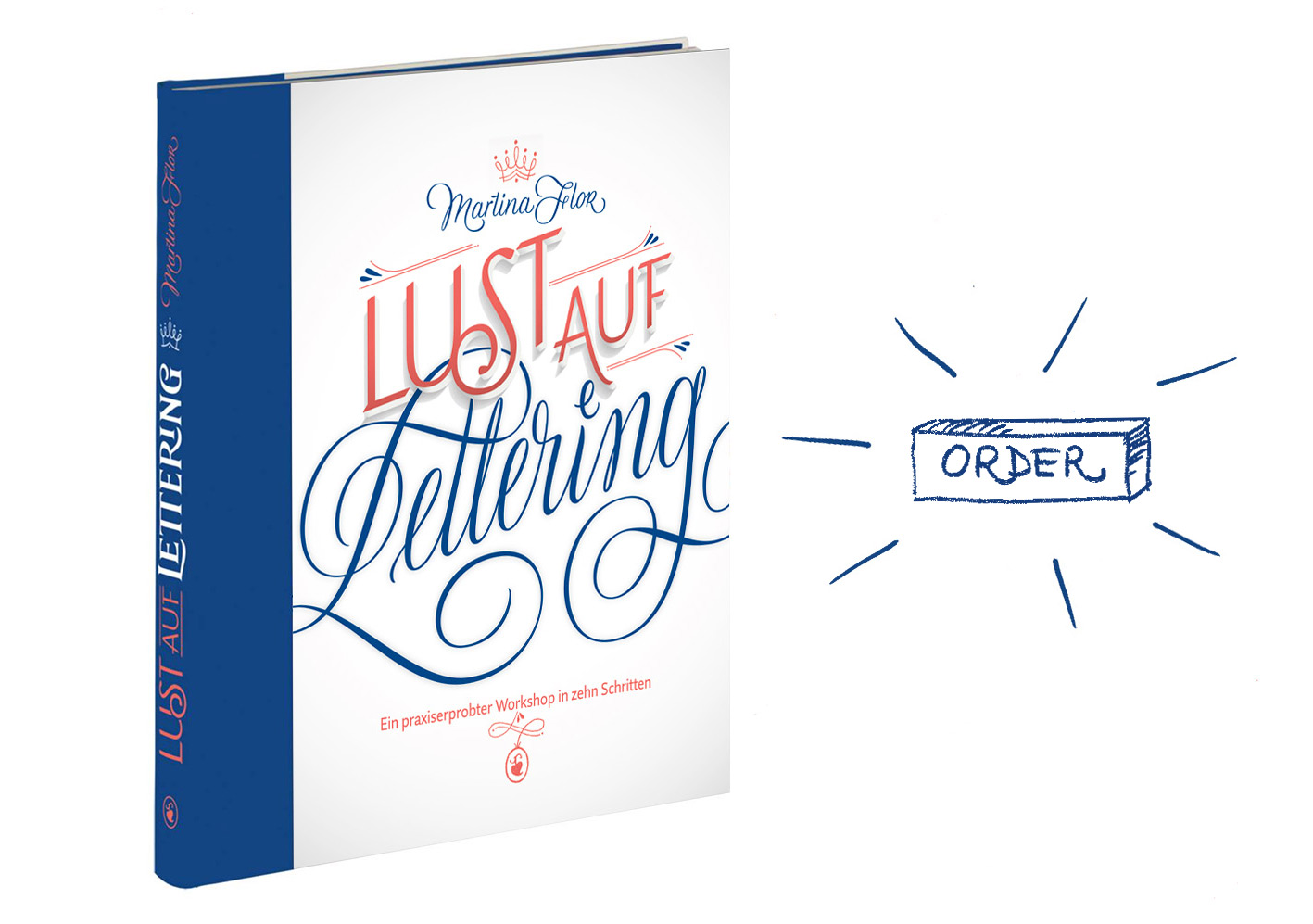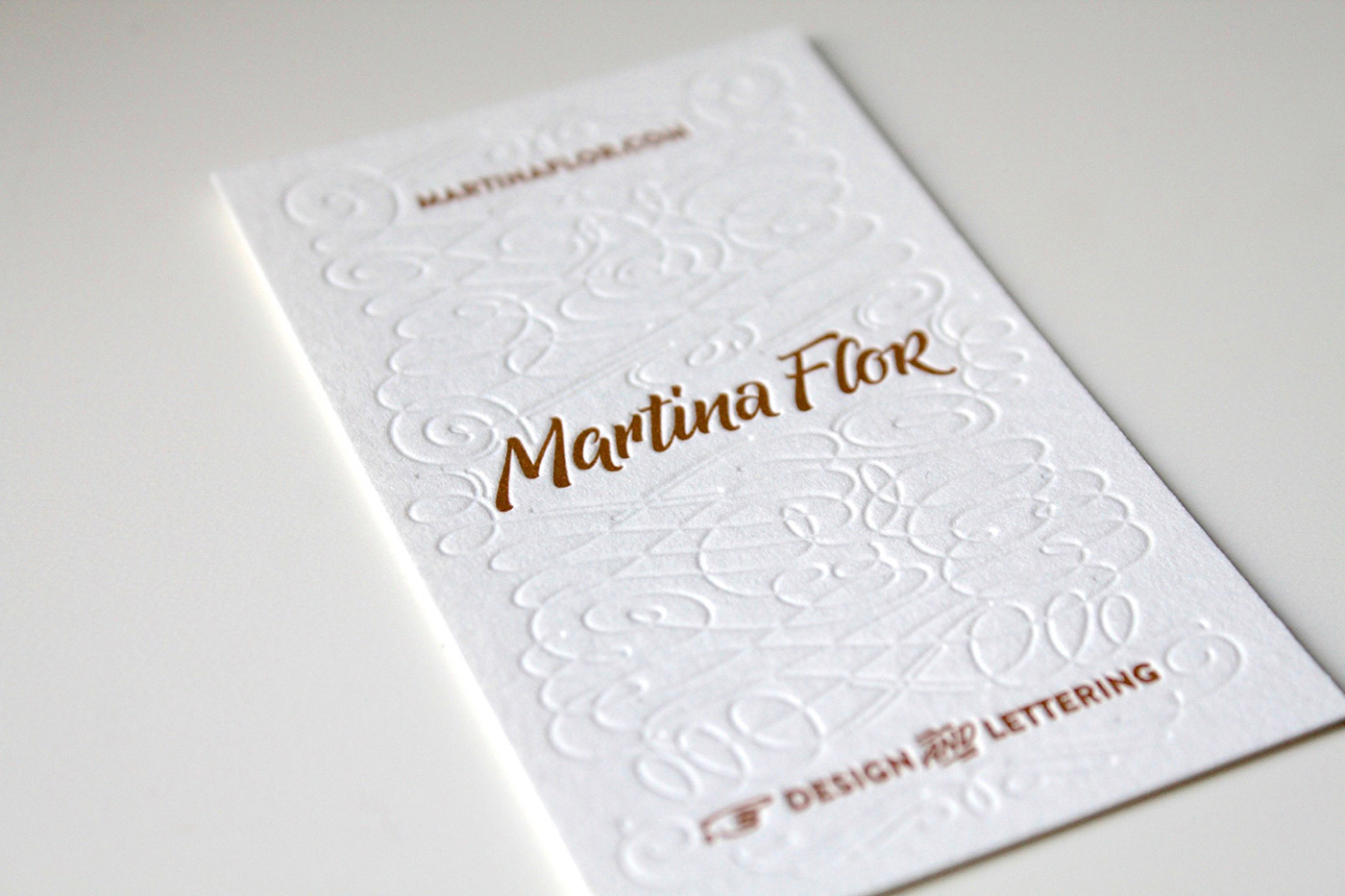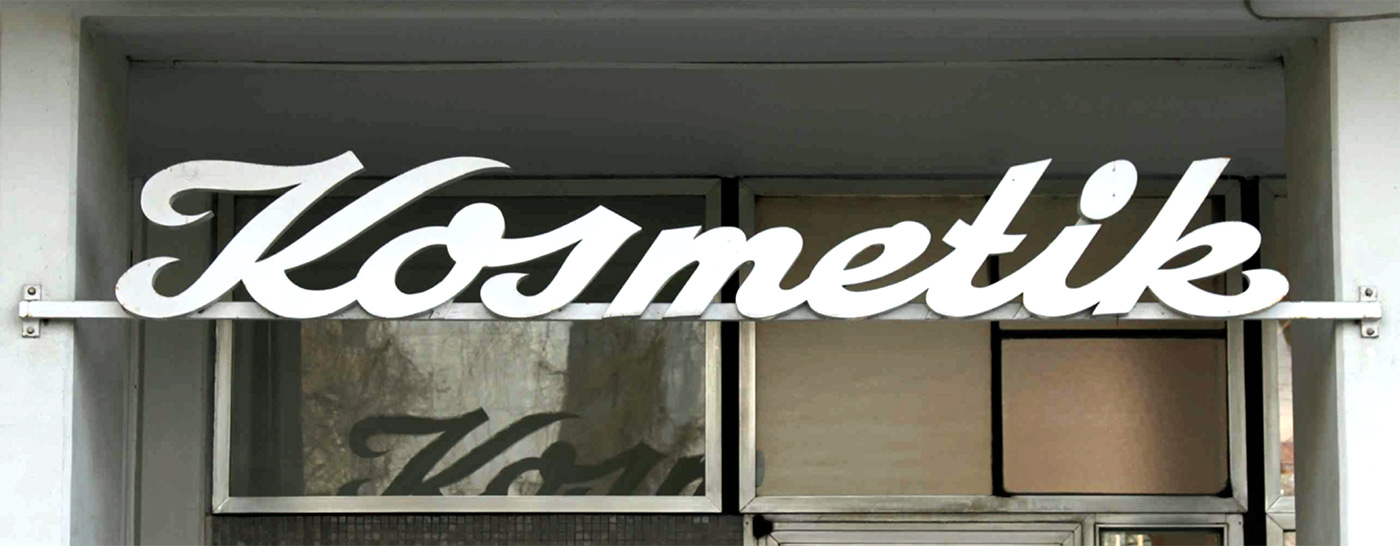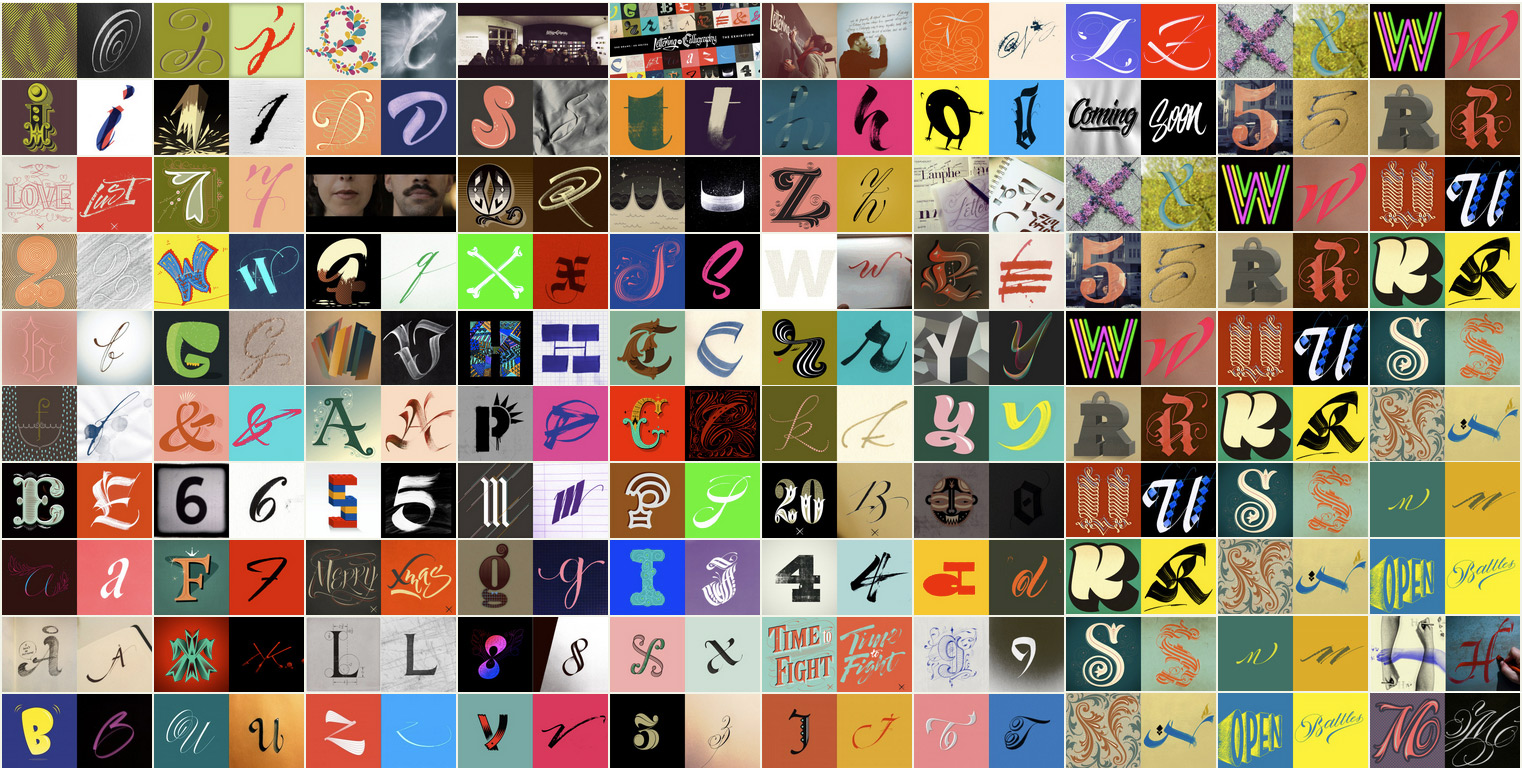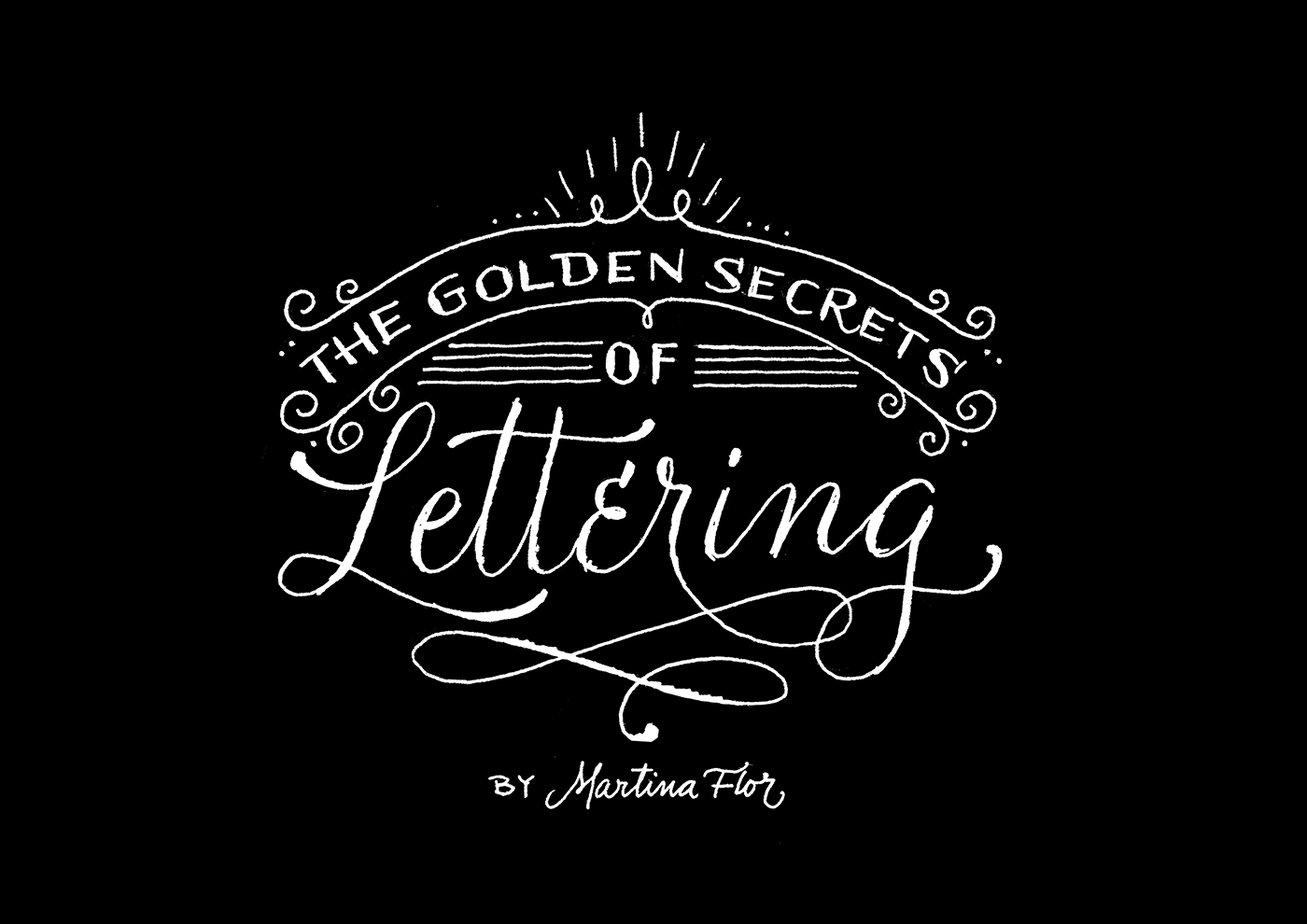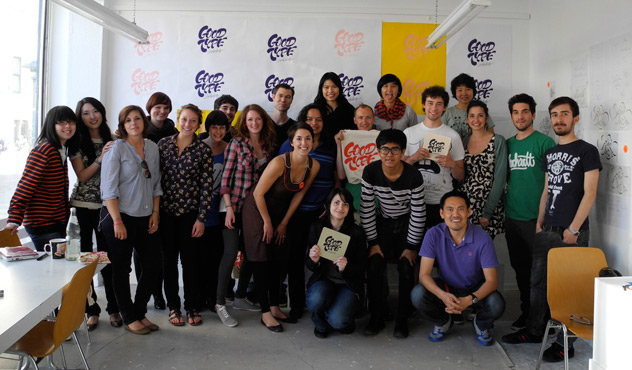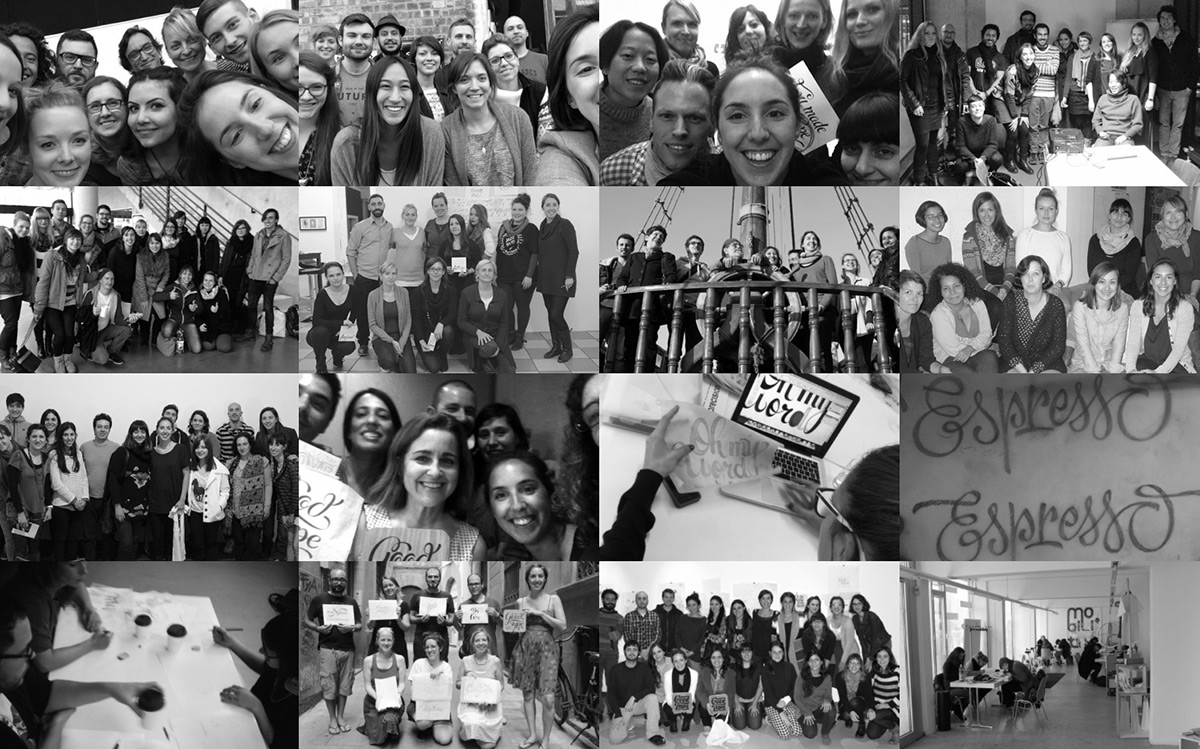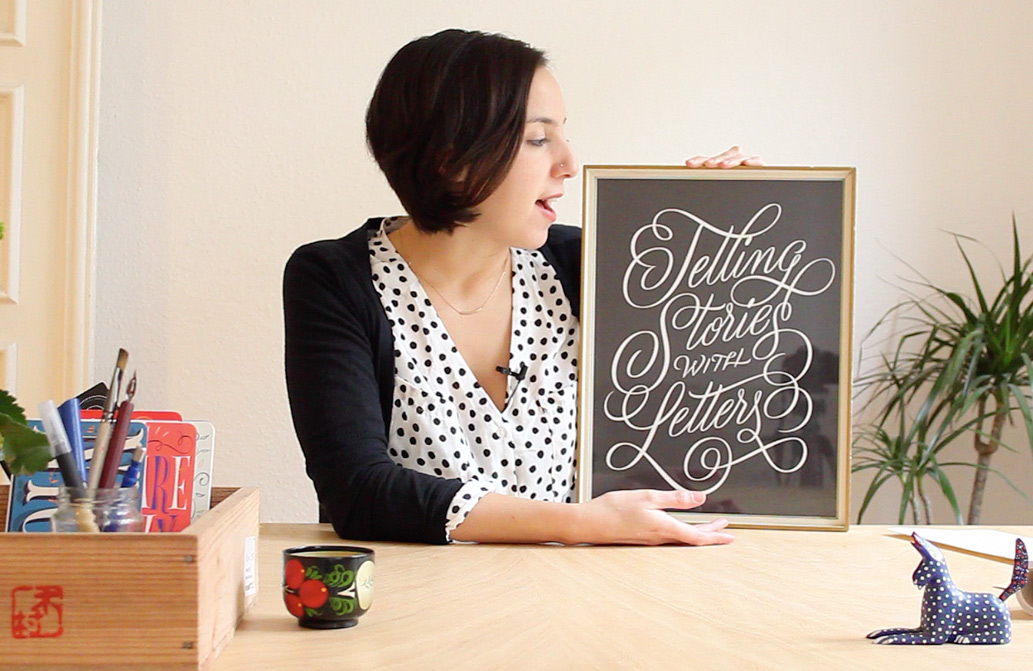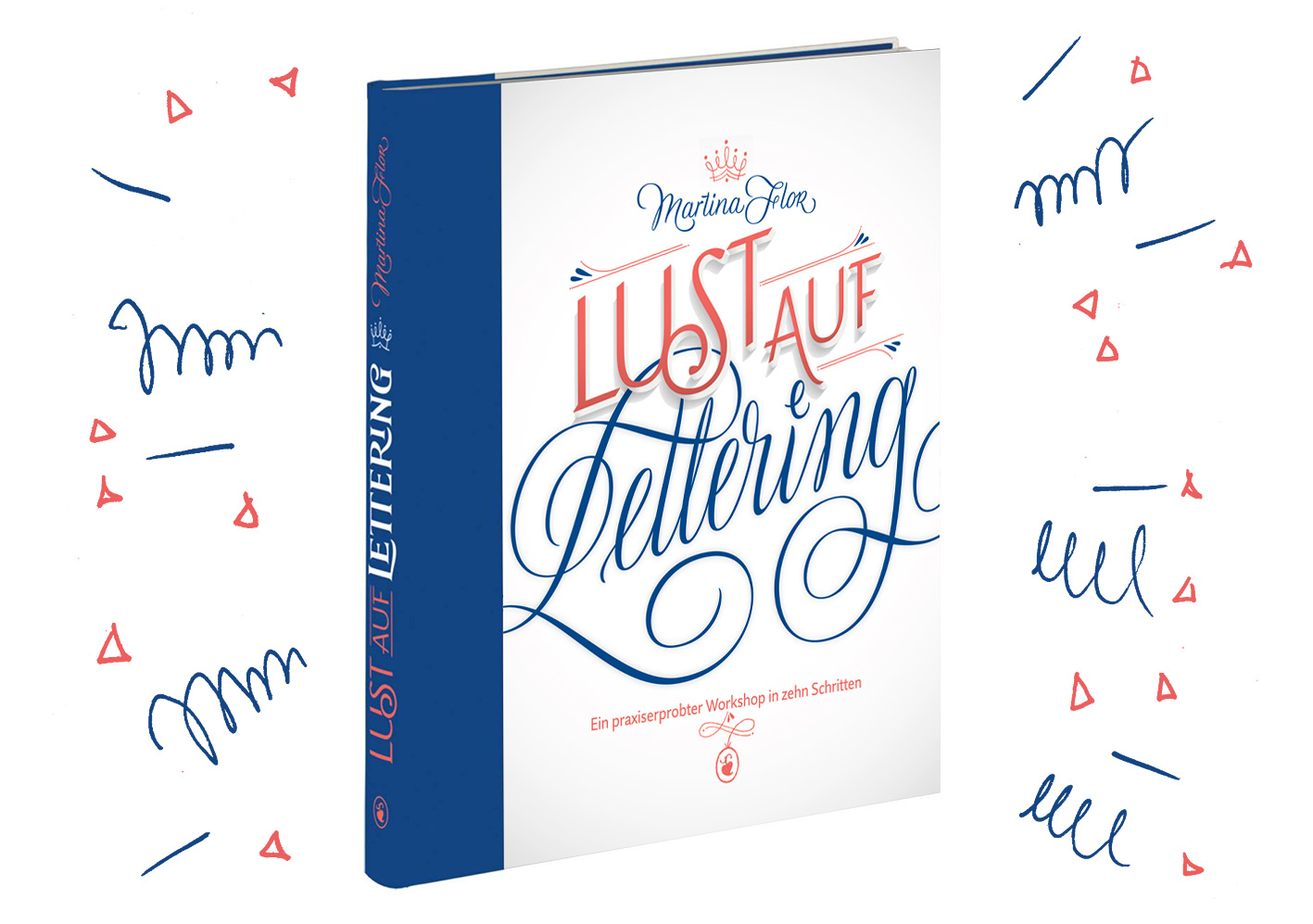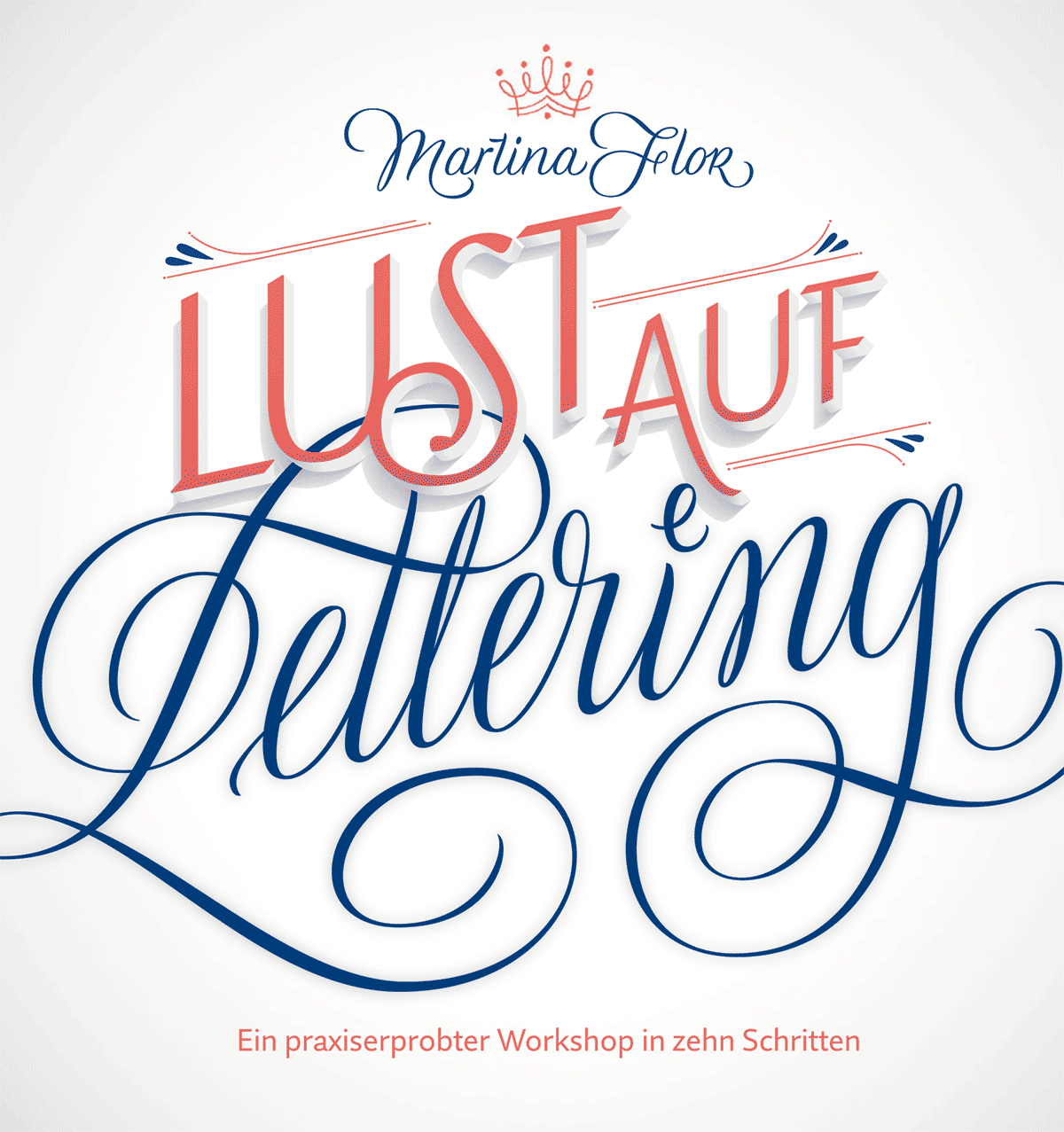THE FIRST STEPS
After holding talks about my teaching methodology at TypeCon 2014 and AtypI 2014, defining the structure of my book turned out pretty easy. I remember coming back from the AtypI Barcelona Conference, driving directly from the airport to the studio, sitting at my desk and putting down on an A3 paper all the ideas that I had in my head. This was the plan de route for the book. 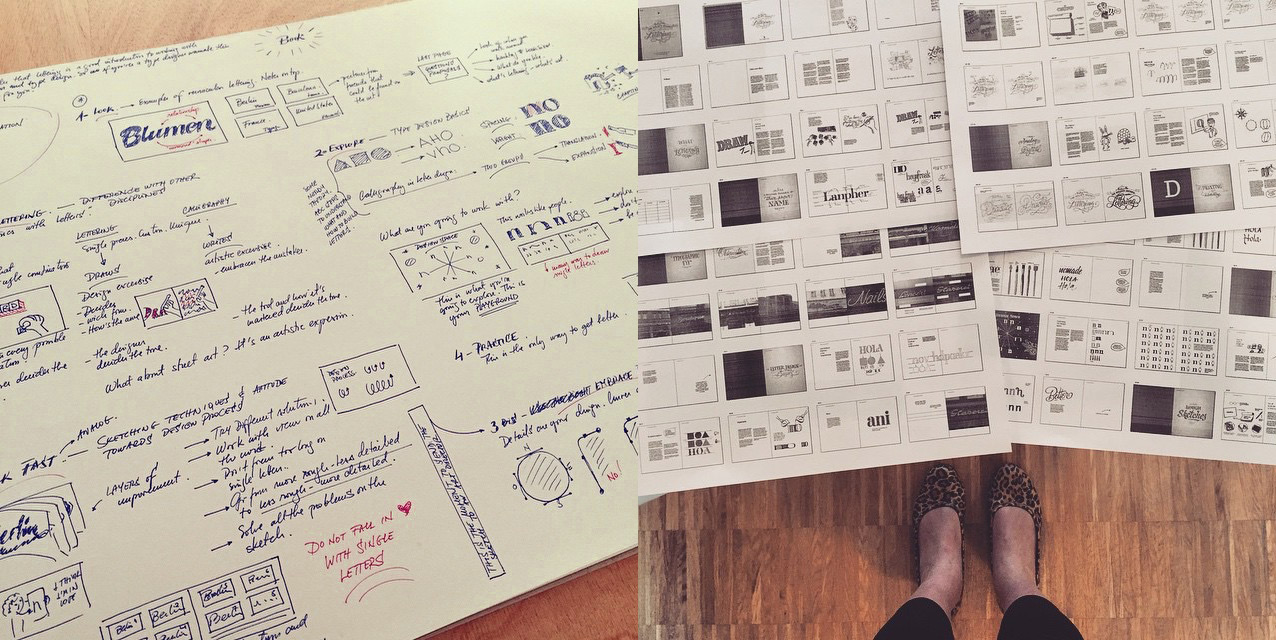
Left: first mind map of the content of my book in November 2014. Right: First pages plan of the book before finding a publisher.
I wanted to make a book that would speak to a broad readership under my personal belief that everyone can learn to draw letters. I also wanted it to feel as if the reader was at one of my workshops, with clear visual explanations. As a result, the book is 50% handmade, including sketches done by me, handwritten notes and schematic illustrations that explain in a didactic way how to draw letter shapes.
Since I defined the first structure for the content, I worked on it on and off aside my studio work. The growing amount of commercial work I was doing didn’t allow me to work on it on a daily basis and it wasn't until TYPO Berlin 2015 that I set a deadline for it.
SIGNING WITH A PUBLISHER
I met Bertram Schmidt-Friedrichs, the head editor from Verlag Hermann Schmidt, at Typo Berlin 2015. We were spontaneously introduced to each other by book designer Tomas Marauzkas. In a 5 minutes conversation I pitched the book I was working on and I believe that I spoke about it with such an enthusiasm and conviction that, some days after, Bertram invited me to Mainz to speak about the project.
Since they have a wide expertise on typography and design books, Verlag Hermann Schmidt seemed the right match for what I had in hands. I was after a publisher that would understand the sort of project I was after.
It took us a two hour meeting to realise that we were on the same page with the direction of the book. One month later we were signing the contract that 9 months after will bring to life this book.
DOING THE BOOK
My son was born a month after signing that contract with Verlag Hermann Schmidt. As every first-time mom, I had no idea of what it means to welcome a baby in your life nor how that influences your daily routine, your family and your work. The first months my son was there where truly challenging, enjoyable and confusing. I didn’t really know how I could ever go from that position to back to work again. However, I was sure of one thing: I wanted to make this book happen.
Funnily, the conditions turned out to be relatively positive to work on it. Since during those months I was taking in very few commercial commissions from clients, I could concentrate almost exclusively on this project. 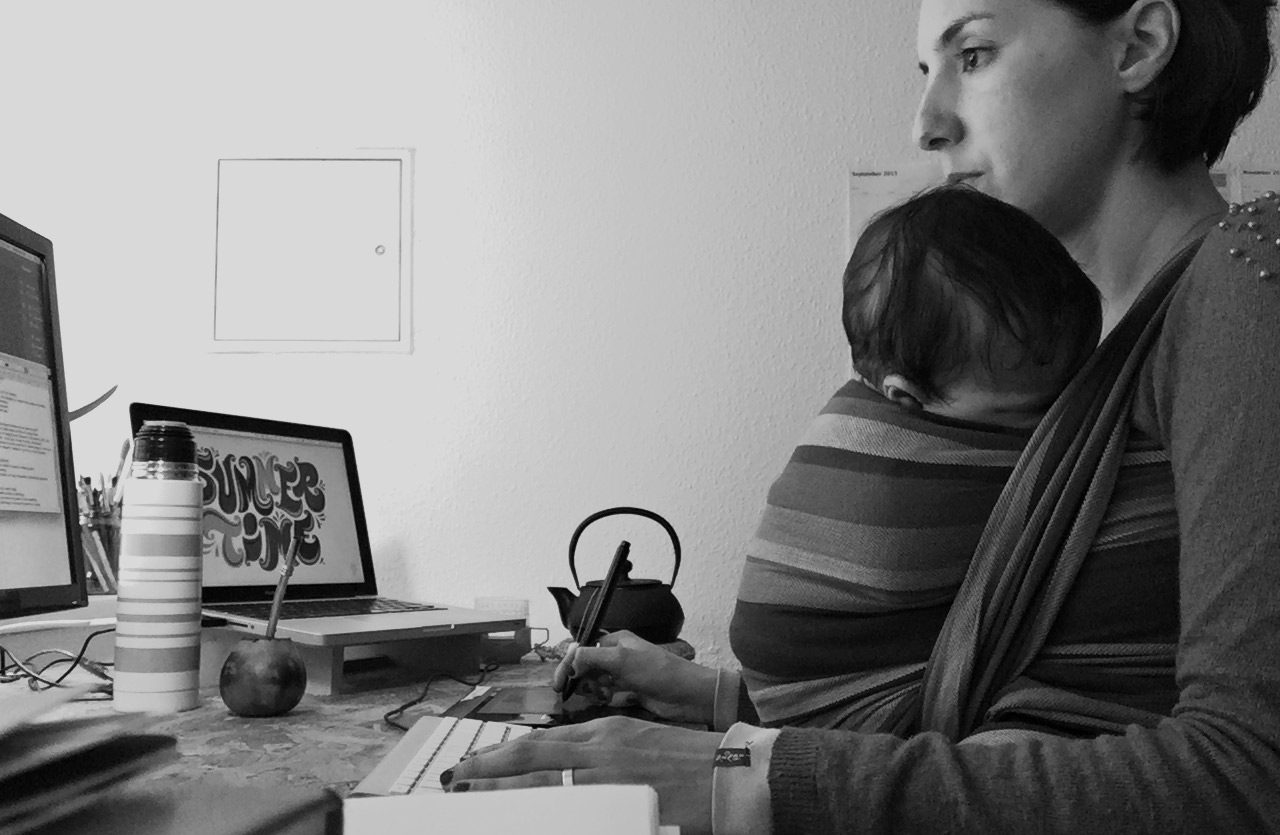
Me working at my home office with baby
I was creating the content, the illustrations as well as taking care of the layout for most of the time and, therefore, the making of process turned out to be really toilsome. Having an engaged, open minded and straight forward editor coordinating the steps as well as giving me valuable feedback was essential to finalise the book.
The book was written in english and translated to german. Since a big part of it is composed by handmade sketches and handwritten notes, the process was time consuming as well as implementing the corrections.
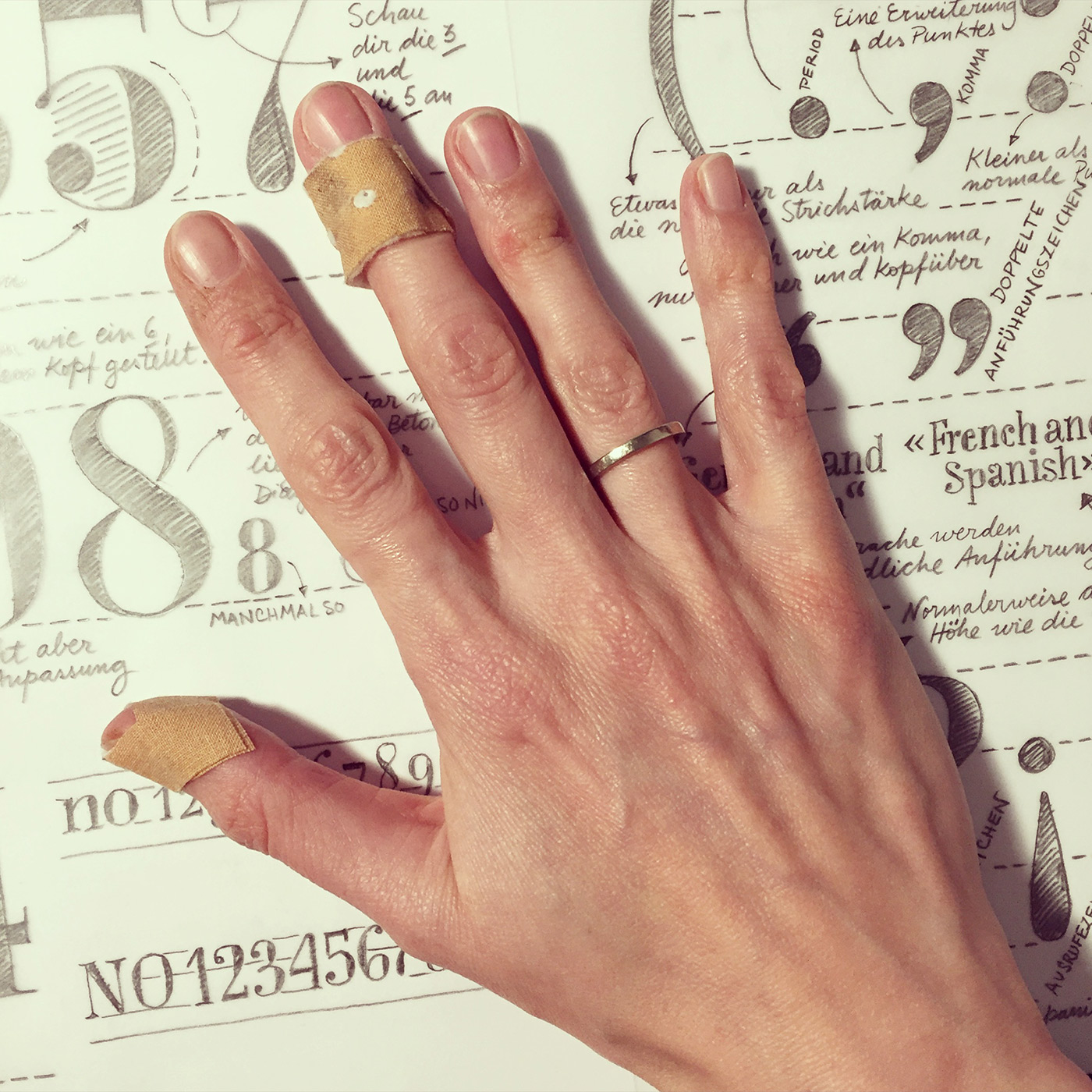
Physical proof of designers hard work
THE RESULT
The book is much more than I initially imagined, and it was shaped through an exciting creative process with my editor as a partner. It concentrates on the process of drawing letter shapes by hand, i.e., the art of hand lettering. However, the goal is not to make imperfect, quirky, handmade-looking type, but rather to create well-shaped, polished, exquisite digital lettering.
To that end, I show the basics of letter design as well as essential tips to master different lettering styles.
I will guide you through the process of creating a lettering project, from start to finish, from analog to digital. Beginning your design by hand, you will learn about sketching methods and techniques to improve your drawings. 
Once you have finished sketching, you will jump into the digital environment and draw your letter shapes in vectors. You will finalize your piece by coloring it and adding texture. 
Last but not least, I will share some insights about the commercial work of hand lettering. I will describe the most common kinds of commissions and give advice on how to reach out for clients and how to showcase your work.
Before you run to your favorite book store to get your copy, you should know that this book shows just one way of doing things: mine. It is informed by my personal experience of working in the commercial world, by all the teachers and colleagues I learned from, and by my involvement in teaching at universities and private workshops.
My aim with it is to share all I have learned through trial and error. Rather than showing pretty alphabets that you can copy and color, this book will provide you with concepts, tools, and techniques that will guide you in your own path to hand lettering. Be ready to learn about them and make them your own. After reading this book, you will see letters in a totally new way.
You can order it online here or find it at your favourite book store.
![]()
Join thousands of readers in this community and upgrade your lettering skills! If you're as excited as I am, send this link to a friend, so they can subscribe too.

